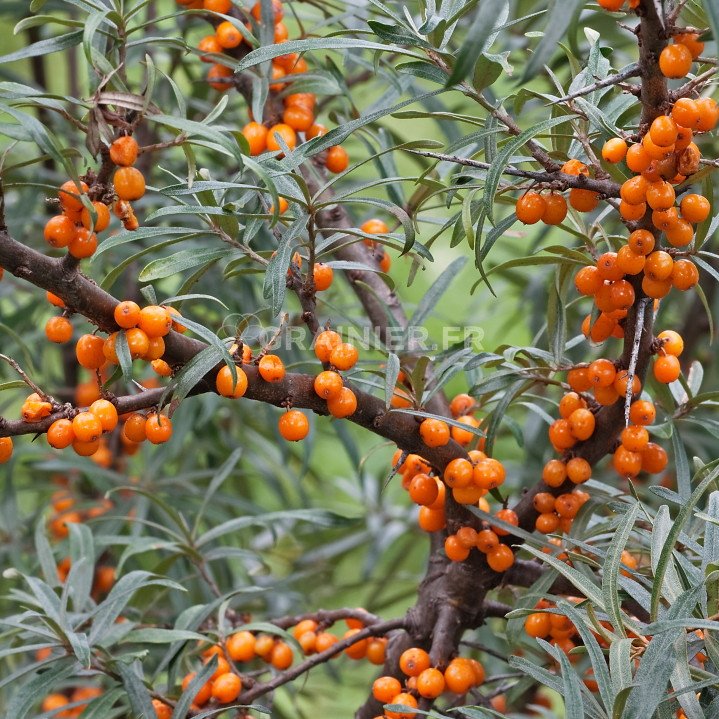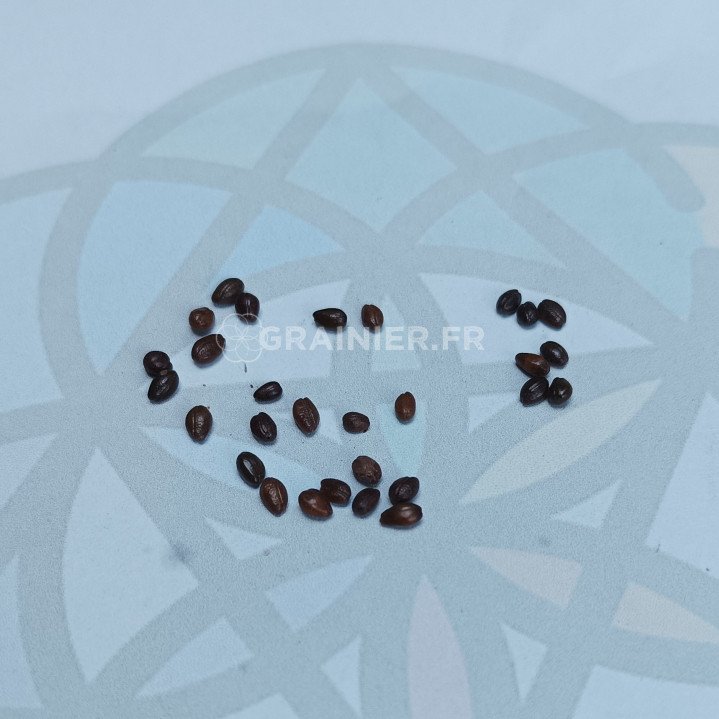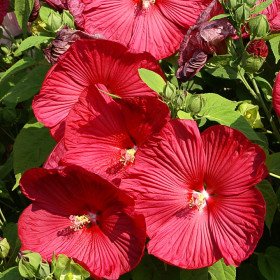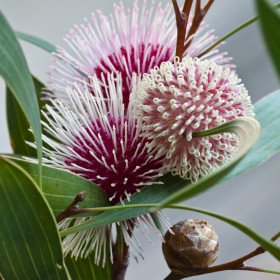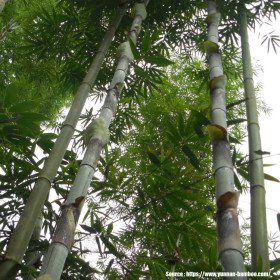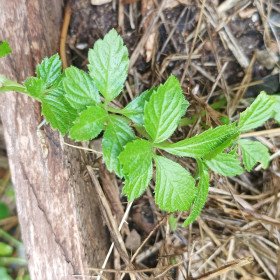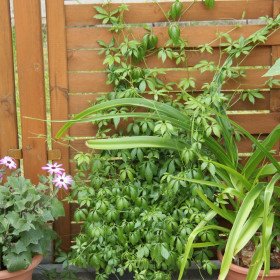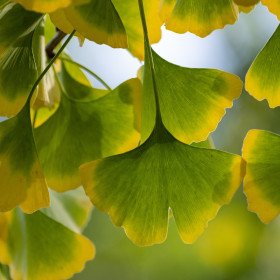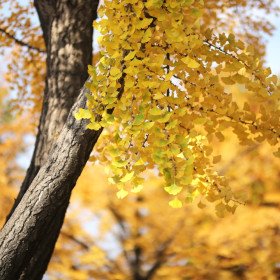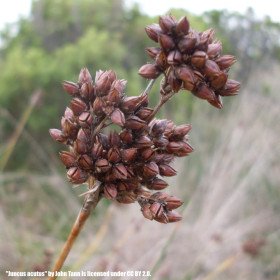10 Graines Argousier, Saule épineux, Hippophae rhamnoides
10 Graines Argousier, Saule épineux, Hippophae rhamnoides
- Modèle : 10 Graines Argousier, Saule épineux, Hippophae rhamnoides
- Disponibilité : 9
- 1,50€
Argousier, Saule épineux, Hippophae rhamnoides |
Nom du Produit : Graines d'Argousier (Hippophae rhamnoides), également connu sous le nom de Saule épineux
10 graines - Rusticité: - 30 °C
Description :
Les graines d'Argousier (Hippophae rhamnoides) proviennent d'un arbuste épineux très résistant, originaire des régions tempérées d'Europe et d'Asie. Cet arbuste est réputé pour ses baies orange vif riches en vitamines et antioxydants, ainsi que pour ses nombreuses applications en médecine traditionnelle et en cosmétique.
Caractéristiques :
- Type : Arbuste à feuilles caduques
- Nom botanique : Hippophae rhamnoides
- Origine : Europe, Asie
- Hauteur : 2 à 4 mètres en pleine croissance
- Feuillage : Feuilles argentées, étroites et allongées
- Fleurs : Petites fleurs jaunes regroupées en grappes
- Fruits : Baies orange vif, riches en vitamines et antioxydants
- Utilisation : Alimentaire, médicinale, cosmétique
- Exposition : Plein soleil
- Type de sol : Bien drainé, tolérant à la sécheresse
Informations de Culture :
Conditions de Semis :
- Période de semis : Les graines peuvent être semées au printemps après les dernières gelées.
- Préparation des graines : Trempez les graines dans de l'eau tiède pendant 24 heures avant le semis pour encourager la germination.
- Profondeur de semis : Enfouissez légèrement les graines dans un mélange de terreau léger et de sable.
- Température de germination : 15-20°C est idéal pour la germination des graines.
Soins après Plantation :
- Arrosage : Arrosez régulièrement pour garder le sol humide mais pas détrempé pendant la première année de croissance.
- Fertilisation : Fertilisez légèrement au printemps avec un engrais équilibré pour soutenir la croissance.
- Taille : Taillez pour façonner l'arbuste et éliminer les branches mortes ou endommagées.
Conseils de Jardinage :
Préparation du Sol : Choisissez un sol bien drainé et légèrement acide, si possible.
Semis : Les graines peuvent être semées directement en pleine terre ou démarrées en pots pour transplantation ultérieure.
Entretien : Protégez les jeunes plants des gelées tardives et assurez-vous qu'ils ont suffisamment d'eau pendant les périodes sèches.
Utilisation : Les baies peuvent être utilisées fraîches ou transformées en jus, confitures, ou comme ingrédient en cosmétique.
Avantages :
Super aliment : Baies riches en vitamines C, E, et en acides gras essentiels.
Polyvalent : Utilisé en médecine traditionnelle pour ses propriétés nutritives et médicinales.
Attrayant pour la faune : Les baies attirent les oiseaux et contribuent à la biodiversité.
Etiquettes : argousier, saule, epineux, hippophae, rhamnoides, GRAINES DE FLEURS & ARBRES Argousier, Saule épineux, Hippophae rhamnoides, Exotiques & Rares Argousier, Saule épineux, Hippophae rhamnoides, Arbustes & plantes grimpantes Argousier, Saule épineux, Hippophae rhamnoides, Argousier, Saule épineux, Hippophae rhamnoides GRAINES DE FLEURS & ARBRES, Argousier, Saule épineux, Hippophae rhamnoides Exotiques & Rares, Argousier, Saule épineux, Hippophae rhamnoides Arbustes & plantes grimpantes

